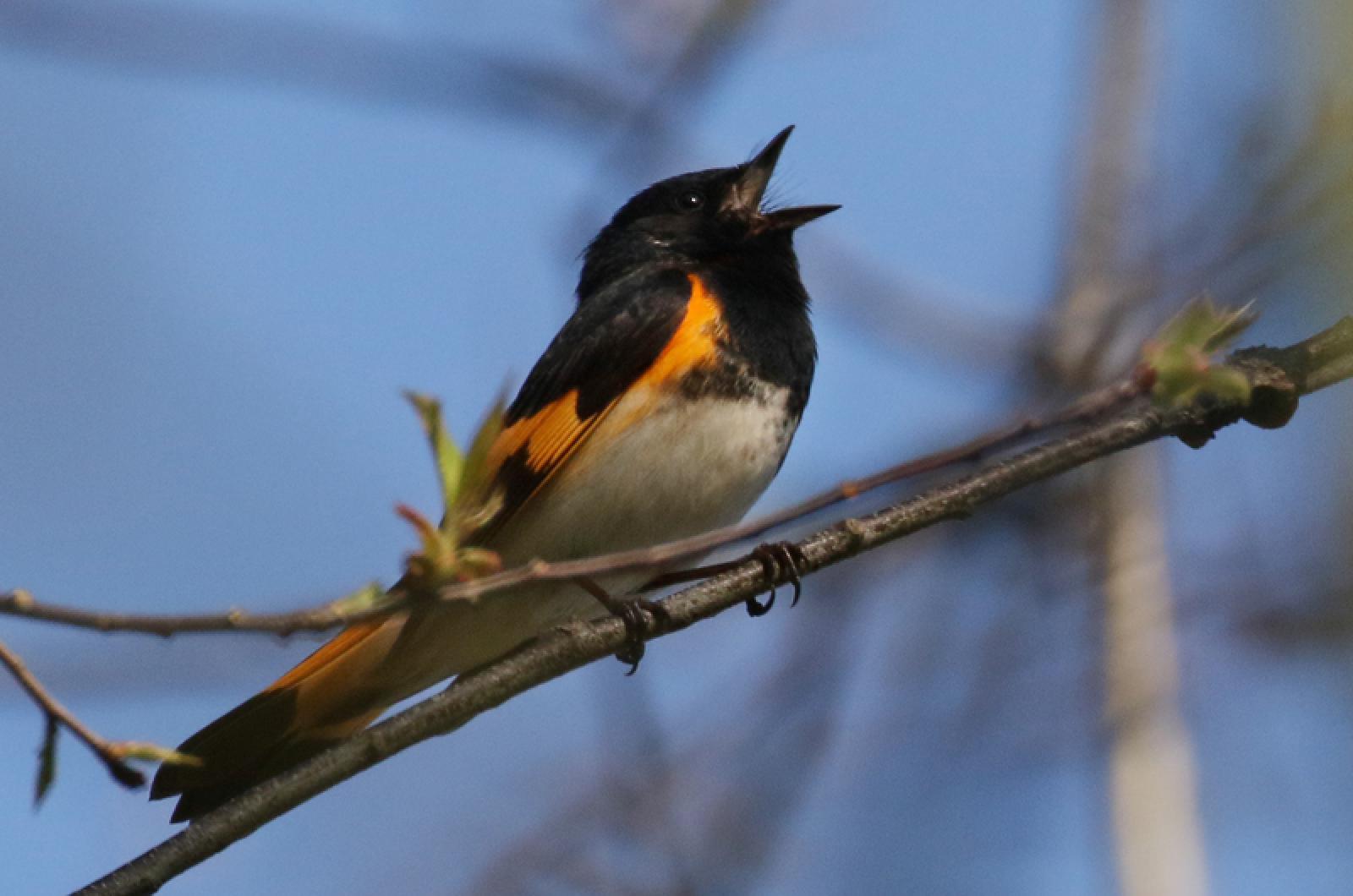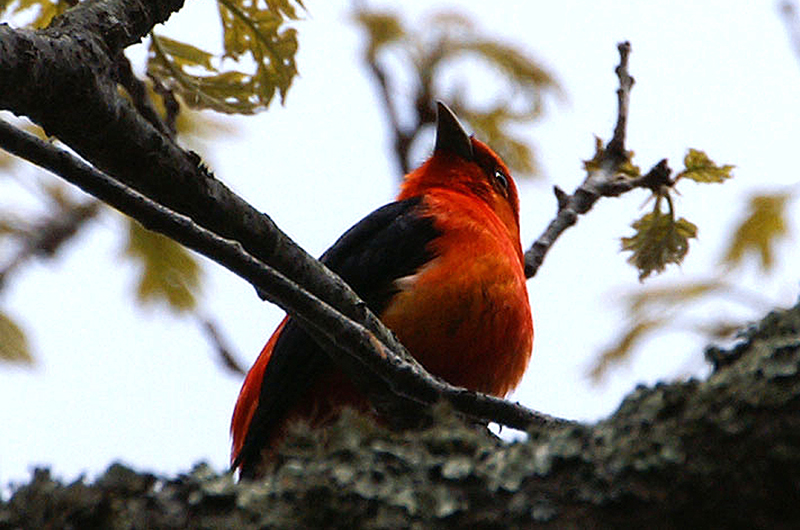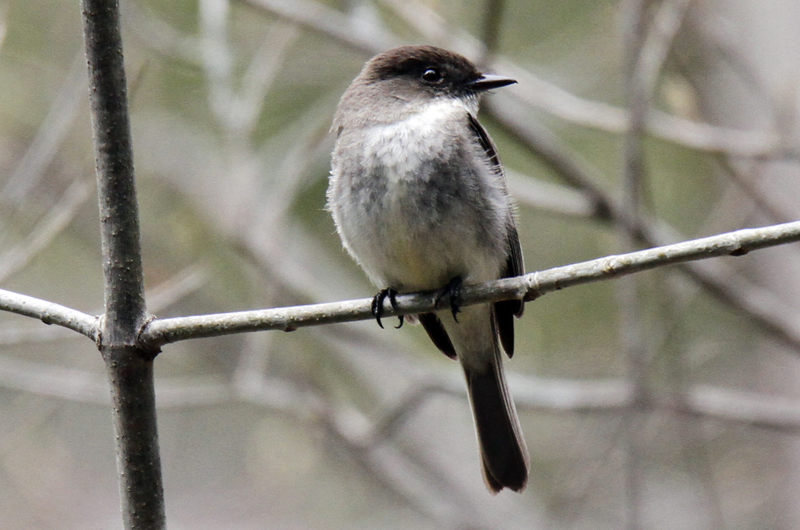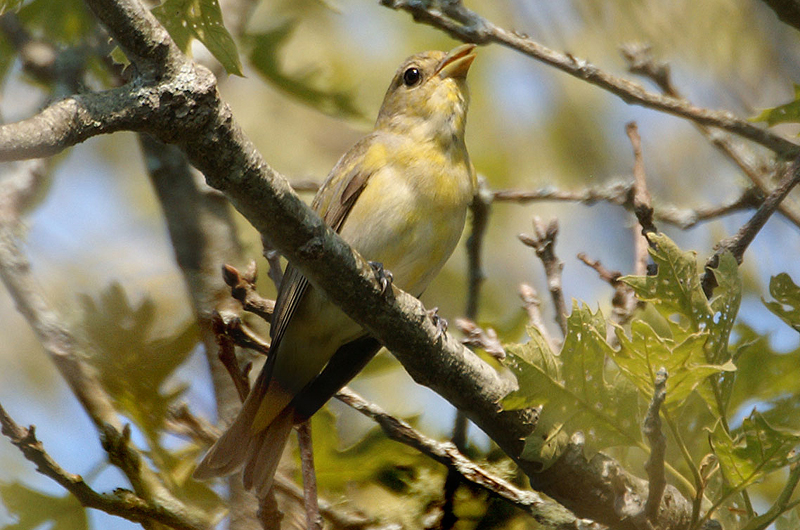It is peak breeding season. Birds are territorial during the breeding season and do not move around much, so the likelihood of finding unusual species is lower and some birders are bored. But the breeding season is fascinating. Our observations can document the size of a breeding population (most species are less abundant now than they were 50 years ago). Questions that are more interesting to you might be: are the birds in your yard (or favorite property) nesting; are they incubating eggs or feeding chicks; how many young did they fledge?
To confirm that a species is breeding, we need to find the nest, see them with their young, observe them carrying vegetation to build a nest, or observe them carrying food to feed chicks. Careful observation of individuals is required. And even with all your eyes out there looking for these clues, we will do well if we confirm maybe half of the species that breed here.
American redstarts are not a common warbler on the Island. They breed along the North Shore in unknown numbers. I have been observing them on Sundays at Cedar Tree Neck, where you can hear four males singing near the parking lot, and I have counted 11 singing males on the yellow trail and the headland loop. Thus there may be 11 breeding pairs, although I have observed only five females (they are less conspicuous because they do not announce their presence by singing). I hope to observe some of these adults carrying food, which is the easiest way to confirm breeding. Finding the nests can be exceedingly difficult and time consuming.
There were only six males singing on June 11. Does this represent a population decrease, or were the males less vocal because it was a hot day? We will see what next Sunday brings.
I have also been counting red-eyed vireos. I have heard six singing males in those same parts of the sanctuary. There are greater distances between adjacent vireos. Their territories may be larger because their song is so much louder and can be heard over larger distances.
Bird Sightings
On June 11, Scott Bliss found a prairie warbler in a very unusual place – perched on his car at the opening to Lake Tashmoo. I can understand the Tashmoo part, as they breed nearby, but on the car? Was it trying to chase away its reflection?
Jeff Bernier observed a male red-winged blackbird on June 10 that had a beak full of insects that were likely destined for some hungry baby birds. It was also carrying a small fish-head in its feet. Likely the fish head was stuck there as only osprey and other birds of prey carry food in their talons.
My June 10 guided birding tour went to Little Beach. Shorebird migration is over, but we found four ruddy turnstones in full breeding plumage. These lingering individuals need to migrate to their breeding grounds in the Arctic. We also saw piping plovers and American oystercatchers, including a brief glimpse of a one-week old oystercatcher chick, but were surprised to find no willets, and the only terns were foraging out in Nantucket Sound.
On June 9, Vicki Bologna and Kate Grillo spotted a weird common grackle in the latter’s yard. This leucistic individual had a white patch on the back of its neck and maybe one or two white wing feathers.
Norma Holmes heard and saw a male scarlet tanager on June 9 at Fulling Mill Brook. She also found a phoebe with food in its beak (it is feeding its young), ovenbird, red-eyed vireo, catbird, blue jay, eastern towhee, Carolina wren, tree swallow, yellow warbler and eastern wood peewee. Earlier in the day she spied a few chimney swifts in Katama.
Happy and Steve Spongberg were scolded by female yellow warbler who tried very hard to keep them on the right side of trail. They were curious about the warbler’s persistence so they looked on the left side of trail and found her nest.
Now the breeding season is in full swing. Please keep us up-to-date by reporting your sightings to birds@mvgazette.com.
Robert Culbert leads Saturday morning guided birding tours and is an ecological consultant living in Vineyard Haven.











Comments
Comment policy »